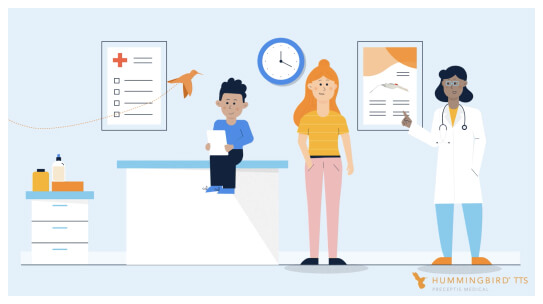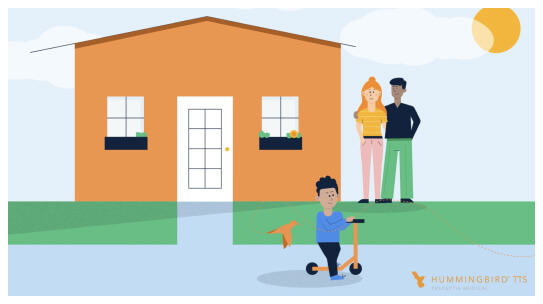Pediatric Ear Tube Placement with a Safe and Simple Approach
The Hummingbird procedure offers parents an alternative to operating room(OR)-based ear tube surgery. The FDA-cleared Hummingbird eliminates the need for general anesthesia and moves the most common pediatric procedure, ear tubes, out of the operating room into the comfort of the office. Parents may be present during the procedure, which often makes the process less stressful and brings comfort to the child.
Helping Families Remove the Challenges Associated with Pediatric Surgery
The Hummingbird procedure helps parents bypass common risks and challenges that come with OR-based ear tube surgery. With the Hummingbird, there is:
- No Pre-Operative Testing
- No Fasting
- No General Anesthesia
- No Post-Recovery Care and Monitoring at Hospital
- No Additional Costs for the Operating Room and Facility Fees
Safety and Effectiveness
The FDA-cleared Hummingbird has been studied extensively. The device has demonstrated the following performance in clinical studies.1
Children successfully received ear tubes in-office
Parents would recommend the procedure to others
Ear tube placement in minutes2
Patients acceptably tolerated the procedure
How the Hummingbird Procedure Works
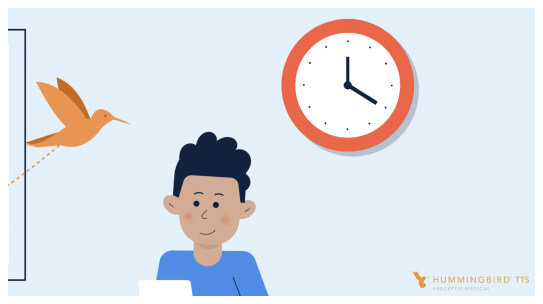
Your child will be gently swaddled to minimize movement. This allows the surgeon to safely and quickly perform the Hummingbird procedure.
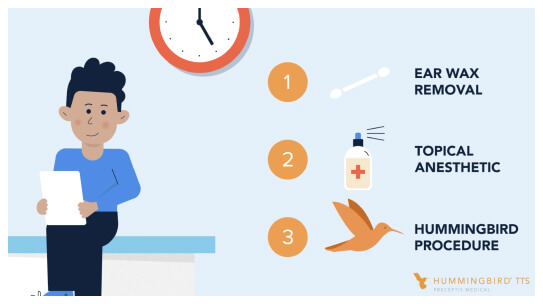
The surgeon will insert a speculum and remove any ear wax, if required. A topical anesthetic is placed on the ear drum, or tympanic membrane, helping to numb the area and create comfort for your child.
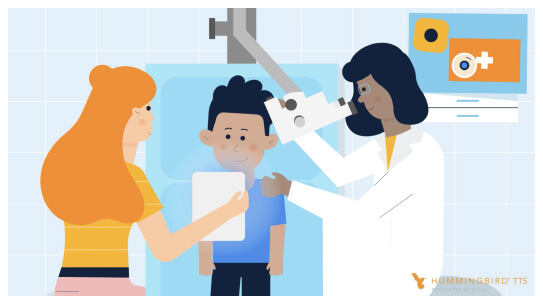
Using the Hummingbird’s One-Pass® technology, the tubes are safely and quickly placed in your child’s ears.
Frequently Asked Questions
Parents elect the Hummingbird procedure over OR-based ear tube surgery for various reasons. However, most commonly, we understand that families choose the Hummingbird as it eliminates many challenging aspects associated with surgery, including general anesthesia, while delivering safe and effective outcomes for children.
The Hummingbird may also reduce overall costs by eliminating the need for:
- Pre-Operative Testing
- General Anesthesia
- Post-Recovery Care at the Hospital
- Additional Costs for the Operating Room and Facility Fees
The Hummingbird has been extensively studied in clinical trials. The device is FDA-cleared and is safe and effective.1
The device provides an even safer option for your child by eliminating the potential risks associated with general anesthesia. Thousands of children across the U.S. have been successfully treated using the Hummingbird.
The Hummingbird procedure is highly efficient and ear tube placement is completed in minutes.2 Children may also resume normal activities immediately following treatment.
Just before the Hummingbird procedure, your child will be swaddled to limit movement and allow the ENT to safely perform the procedure. Care staff will gently cradle your child’s head during wax removal and ear tube placement.
On average, Hummingbird ear tubes stay in place for 11 months before falling out on their own.1 This ear tube duration is consistent with averages associated with traditional ear tube surgery. It is important to note that some ear tubes fall out early and 30% of children require a second set of ear tubes. This is true for both the Hummingbird procedure and OR-based ear tube surgery. Please speak with your ENT if you have additional questions regarding ear tube duration.
News & Resources

Parent Experience: Lizzie and Jon
01/12/2024
Lizzie and Jon’s son, Elliott, experienced frequent ear infections, contracting five infections in just eight months. Ear tube surgery was recommended by their pediatrician, however, the family wanted to avoid general anesthesia for their young son. Learn more about their experience with the Hummingbird.
Read more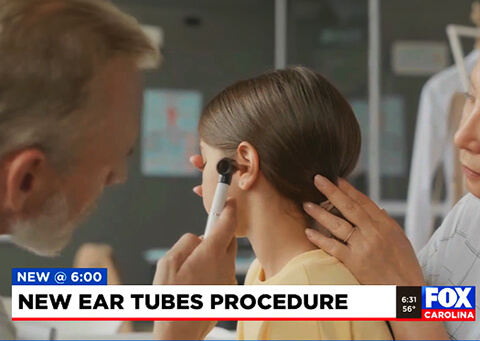
FOX Carolina News: Ear Tube Procedure for Children can be Done in 5 Minutes
02/20/2024
Ear infections in children can be painful, and are very common. If a child gets too many in a short period, ear tubes are often the answer. Usually, the procedure is done in a hospital setting with anesthesia, but a new medical device is changing the game.
Read more



